OFweek smart home network news: The air purification of this matter of life and death, manufacturers slogan sounded always suspicious. Negative ion technology, electrostatic dust collection, HEPA, activated carbon, light plasma, negative oxygen ions, etc. These names are multifarious and difficult to understand. In fact, many consumers only care about one issue - are they really effective?
Of course, more questions will follow: As the doors keep on switching, can the effectiveness of air purifiers be maintained? How much of the air purified by a large purifier in one corner of the room can really be inhaled by us? What is the new air system and can it replace air purifiers?
The reporter contacted Jovan Pantelic, a professor at the University of California, Berkeley, and the CTO of Sprimo, an air purification company in Silicon Valley, and Han Chunxiao, a chemistry doctor at New York University. He listened to them and talked about several myths in the air purification industry and the new wind in Silicon Valley.
Myth One: Negative ions can purify PM2.5?
Nowadays there are many common air purification technologies on the market. These five kinds are common: negative ions, electrostatic dust collection, photocatalysts, HEPA filters and activated carbon filters.
Negative ions are among the most controversial ones. Its principle is to degrade it into pollution-free chemical products by actively reacting with pollutants outside the machine. Because it sounds like a full sense of science and technology, negative ion technology is the “main battlefield†for air purification marketing in recent years. Many air purification products claim to have “ion release function.†However, is negative ions really effective for air purification?
“The consensus of the American academic community is that negative ions are not the best choice for air purification,†Dr. Pantelic told reporters.
It has two defects: First, the ability of air purification is not outstanding. “Probably only effective within 30-40cm, the effect will disappear soon as the distance increases,†Dr. Pantelic explained.
Second, they chemically react with gases in the air. When the temperature is too high, the temperature is too low, or there are other reactive materials in the air, the secondary organic aerosols produced by these chemical reactions may be more important than the original. The product removed was also "toxic" several times.
For Chinese consumers suffering from haze, it is particularly important that negative ions may have effects on bacteria, mold, volatile organic compounds (ie, formaldehyde, benzene, etc.), but it is almost ineffective on PM2.5. .
Myth 2: "Electrostatic dust collection" and "photocatalyst" are safe and reliable?
The same "electrostatic dust collection" using the ionization principle is also not completely reliable. It is different from the negative ion technology: it generally retains pollutants in the machine, first use high-voltage electricity to make the dust negatively charged, and then use a positive dust collector to absorb dust.
However, like negative ions, it also brings unpredictable chemical reactions that can lead to harmful gases. In addition, "in the absence of frequent scrubbing device, the adsorption capacity of the board will weaken," said Han Chunxiao. In this way, charged dust will "escape" into the air. These viscous air will hit what is sticky and stick to the wall and create a "black wall phenomenon."
“The worst case scenario is that the charged dust is drawn into the lungs and it will stick to the lungs and it will be difficult to clean up,†Han Chunxiao explained to reporters.
In addition, electrostatic dust collection technology and negative ion technology have a common flaw: they may produce ozone that is toxic to the human body.
The official documents of the U.S. Environmental Protection Agency and the U.S. consumer report point out the dangers of ozone to the human body. Although according to the Shanghai Consumer Council’s test, the concentration of ozone produced by negative ion generators is limited, there is no clear ozone concentration limit in the world. Therefore, ASHRAE (American Association of Heating, Refrigerating and Air Conditioning Engineers) urges everyone to use ozone-free production as much as possible. Purification technology.
Photocatalyst technology also brings many unpredictable chemical reactions. This purification method refers to the use of ultraviolet radiation on TiO2 (titanium dioxide) nanoparticles, which then generate hydroxyl radicals. OH, and use it to react with toxic gases and bacteria to complete degradation.
"When discussing photocatalysts, one thing is often overlooked," Han Chunxiao said. "That's wind speed."
For this complete chemical reaction purification method, when the dirty air flows at a slower speed, what? OH has enough time to react. However, large-scale purifiers on the market are often pursuing large amounts of air. The OH reaction is incomplete - it produces other harmful products in addition to water and carbon dioxide.
“In addition, titanium dioxide is a nano form, which will leave the motherboard and float in the air over time,†said Han Chunxiao. “The impact of nanomaterials on human health has not yet been resolved in the scientific community. It is a hidden danger.â€
Myth 3: Can large air purifiers save your breath?
In the advertisements of various types of air purification products, "hold and firmly lock the formaldehyde to decompose, apart from the formaldehyde rate up to 99%" "purity ion mass space purification technology, four filter screen purification, 2.5 micron particles It can also capture 99% of such placards.
However, according to the results announced by the Beijing Consumers Association in last winter, 54% of the samples tested in the comparison tests of the 50 on-line air purifiers they tested had problems, and one-fifth of them were inaccurate. It does not purify the sources of pollution declared in advertisements.
In addition to misleading propaganda, Dr. Pantelic thinks there is an important problem with the large purifiers on the market: they cannot really improve the air in the breathing zone.
This year, he did a field experiment in his office at the School of Environmental Design at the University of Berkeley: He opened a large air purifier in his office to simulate the occasional in and out, the wind speed to 2 (to avoid office noise) The real situation, to test the air quality at the desk.
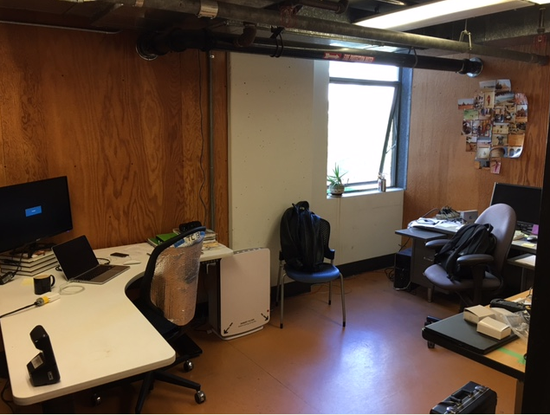
Dr. Pantelic first looked for a 15-square-meter, relatively small office, comparing the efficiency of large purifiers in closed and open doors. As a result, the purifier can remove 60% of the contamination within 20 minutes when the door is closed, but once the door is opened, this purifier can only remove 30% of the pollution within the same time.
This means that in a confined environment, a large purifier has a good effect, but once the door is opened to open the window, the effect is greatly reduced. It's like a pipe into a child, a math problem with a water pipe, an open door is an inlet pipe, a large purifier is an outlet pipe, and it is never completely filtered. If the door is kept closed, the carbon dioxide content in the indoor environment will rise, and the long time air will not smell like new.

Large purifier open and close test results
Then, he found a medium-sized office, about 70 square meters, to run the purifier at the same speed. During the experiment, there was an open door and occasional free movement of personnel. In the end, the experimental result they got was that the purifier used 30 minutes to reduce the pollution source by 30%. After that, it remained at this level and never dropped. Because the space is too large, the speed of the purifier is not enough for the whole room. The air circulates.
From the experimental results, these large-scale indoor purifiers have improved breathing results in a real environment when it is impossible to ensure that the rooms are closed and the room area is appropriate, but there is no qualitative improvement.
The official cleanliness data (whether air purifiers or consumer associations) are often obtained in a fully enclosed laboratory and opened to maximum wind speed. Such figures cannot appear in real life. It is difficult for people to ensure that the space is completely enclosed, and people entering and leaving the space will also bring unpurified air and further reduce the purification effect. The air purifier has been driven to its maximum power, which not only consumes a lot of energy, but also greatly affects normal life.
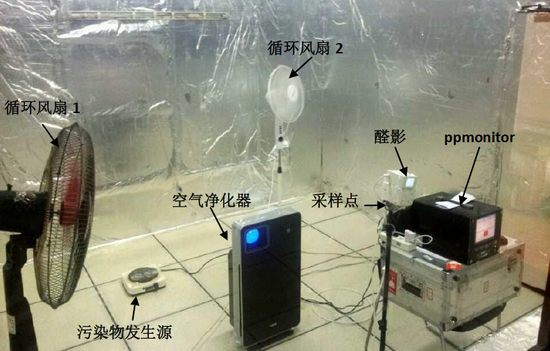
Typical official purifier test site (screenshot from Tianjin University School of Environment)
From the central government to personal space, the United States has started a new market
If purification of the entire room is not entirely feasible, what does our breath depend on?
Reporter to Dr. Pantelic mentioned that China is now very hot "fresh air system." At first, he was rather puzzled. After a few gestures, he suddenly realized that the fresh air system in my mouth was actually the "compulsory ventilation system" required by European and American countries to install in commercial buildings. In China, due to the excessively severe haze problem in recent years, a filtering function was added to this system, and a new round of market bombardment was started by changing the name of a translation.
"What needs to be noted is that the fresh air system is mainly for providing fresh air," Dr. Pantelic said, "So whether it has a reliable purification function, but also based on specific studies of different products." The combination of fresh air system ventilation and qualified air purifiers, the purification effect may be more reliable.
In addition, the air purification in Silicon Valley has undergone great changes when the new air system in the Chinese market has been on the rise and various air purification equipments are overwhelming – from the earliest HVAC systems (ie, through the central control to guarantee a certain amount of Fresh air can replace indoor air. Later, large indoor air purifiers developed into today's personal air.
Dr. Dr. Pantelic and Dr. Han Chunxiao introduced the latest air purification direction in Silicon Valley to this reporter: “Personal Ventilation Systemâ€.
The concept of “personal ventilation†does not require purifying the entire room, but it can efficiently and quickly improve the respiratory quality in the individual space. In fact, it's fair to say that everyone needs so much clean air, so why bother to clean up the entire room?
Han Chunxiao’s startup company Sprimo is doing this thing – creating a personal “air space†by increasing the air quality of the user's breathing area in a short period of time. Their first purification product was a personal air purifier using a mechanical strainer. In addition to Han Chunxiao, another founder of Sprimo is Ray Combs, a product expert with more than 20 years of experience in Silicon Valley and four successful startups.
The body of the Sprimo purifier is round and the body can be rotated 90 degrees. The dark mirrored mainboard displays the real-time air quality filter life and wind speed. The shape of this purifier was designed by Dan Harden, one of the most famous industrial designers in the United States. He also designed well-known products such as Google Chromcast, Nest Cam and Nike Fuel Band.
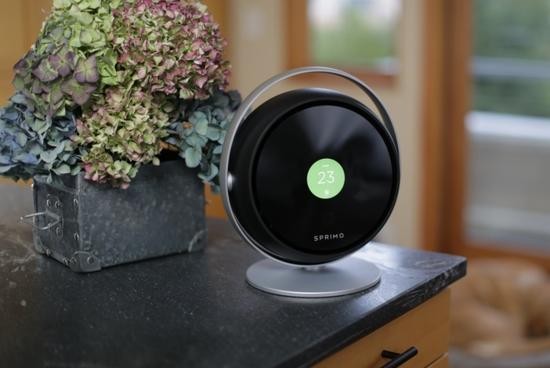
Sprimo's wind speed control system also follows the concept of personal space. Instead of providing users with high, mid, and low wind speeds in the traditional sense, they let the user select the distance of clean air to adjust the fan speed.
If the user sits half a meter away from the Sprimo and adjusts the clean air area to half a meter, Sprimo will automatically adjust the fan speed to ensure that clean air is delivered to half a meter. Can accurately control the "invisible air" to this extent, it is a bit sci-fi.

After large purifiers are turned on, the air quality will gradually increase linearly over time. The principle of "personal ventilation" adopted by Sprimo can immediately purify air in percentages within a short period of time, regardless of whether the current air quality is good or bad. Han Chunxiao said that after 30 seconds on, Sprimo can increase the air quality of the user's breathing area by 40%; after 20 minutes, this ratio can reach 60%.
Based on this scaled-up feature, Sprimo can be used not only alone, but also in combination with large purifiers to increase the degree of purification by one more level.
Specifically, when the large-scale purifier reaches the purification limit, Sprimo is turned on, and the air quality instantly increases by 40% on this basis. This "synergy" has been confirmed by Sprimo's laboratory in Berkeley, California. It is precisely because of this "synergy" that Sprimo's marketing strategy is not to replace all large-scale purifiers, but to further optimize the air based on the large-scale purifiers with limited effects, so that "purification of air" can really help People's breath.
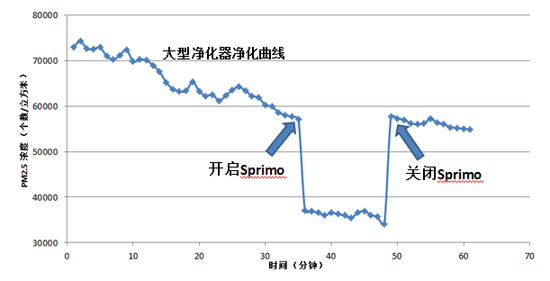
Testing the synergistic effect of Sprimo with a large purifier at the University of California, Berkeley
Han Chunxiao told reporters that Sprimo also developed a Sprimo PAM (Personal Air Monitor), the world's smallest personal air detector. The reporter's measured experience is that this product can be used only by plugging in the mobile phone interface, and real-time air quality can be seen in the matching app. It is very simple and effective.
"Plug in PAM, the phone will instantly become an 'electronic nose', allowing you to 'see the taste of the air'." Han Chunxiao said with a smile. With it, people can get the maximum "information right" for air quality, and they can also share the air quality in real time through the Internet.
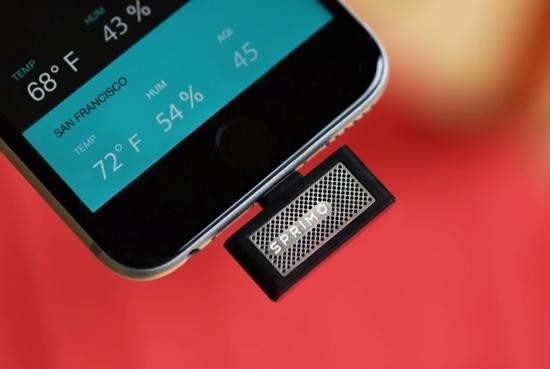
As air purification moves toward the “individualization†path, several other elements of air properties, including temperature, humidity, speed, oxygen content and odor, etc., are likely to expand into larger markets.
For example, Dyson, a veteran British high-end home appliance manufacturer who recently detonated the market, whose core technology is a “leafless fanâ€, allows users to personalize settings through knobs. Fancy this market is also the European startup company Exhausto, shouted the "no need to share the air" slogan, through the laying of office pipelines in advance, the clean air transmission to individual users.
Power 90W ,output voltage 15-24V, output current Max 6A, 10 dc tips.
We can meet your specific requirement of the products, like label design. The plug type is US/UK/AU/EU. The material of this product is PC+ABS. All condition of our product is 100% brand new. OEM and ODM are available in our company, and you deserve the best service. You can send more details of this product, so that we can offer best service to you!
90W Desktop Adapter,90W Desktop Power Supply,90W Desktop Power Cord , 90W Desktop Power Adapter
Shenzhen Waweis Technology Co., Ltd. , https://www.waweispowerasdapter.com